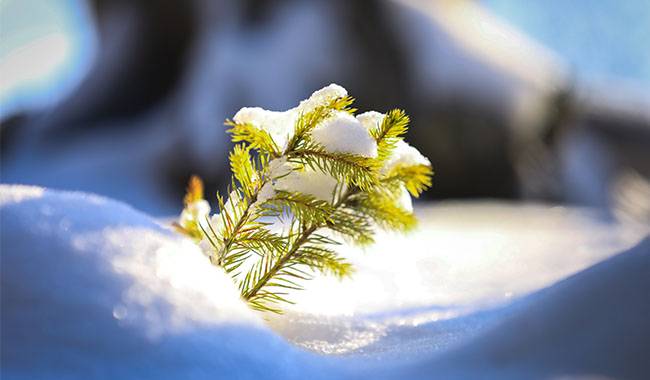
It seems that what could be easier than reaping the rewards. However, like any other business, it has its secrets. And not everyone knows them. How and when to harvest the crop? How to avoid damaging it during the harvest and prolong its fruiting period? What should we use to harvest it? Cut off? Tear-off? Pinch off? There are so many questions and also some answers.
BERRIES AND FRUITS
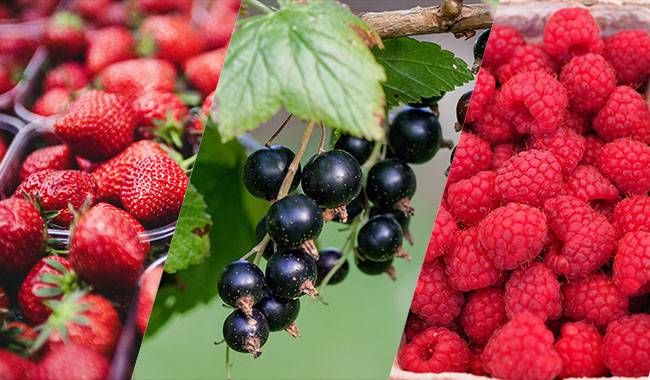
Strawberries
The ripening period of garden strawberries is quite long – it depends entirely on the characteristics of the variety and the climatic zone of cultivation. But in any case, the conditions for harvesting are the same: if you pick berries for immediate consumption – choose the reddest ones. If you want to take them elsewhere – choose slightly less ripe ones. When doing so, select the strawberries gently, biting the pedicel above the “cap.” Otherwise, it is easy to damage the plant.
Currant
Red, pink, white, and yellow Currant should be harvested at once when most of the berries in the bush have the characteristic “ripe” color. They should be harvested with the spike, pinching off the stem where it connects to the fruit.
Currant is harvested in two or sometimes three stages: when most bristles are ripe and 7-10 days later. Crumpled berries should not be placed in ordinary containers, as they quickly lose their characteristics and cause the rest of the crop to become unstable.
If different types of Currant ripen simultaneously on the plot, the first thing to do is to start harvesting black Currant and white Currant bushes. Red Currant bushes can wait for a while because they do not tend to shed quickly.
Raspberries
Both single and compound varieties mature gradually, so they should be harvested every two to three days. The best time is early morning or late afternoon, but always when there is no dew. Raspberries should be picked when fully ripe if they eat immediately or slightly under-ripe if they are transported. Containers for raspberries should be baskets or plastic containers.
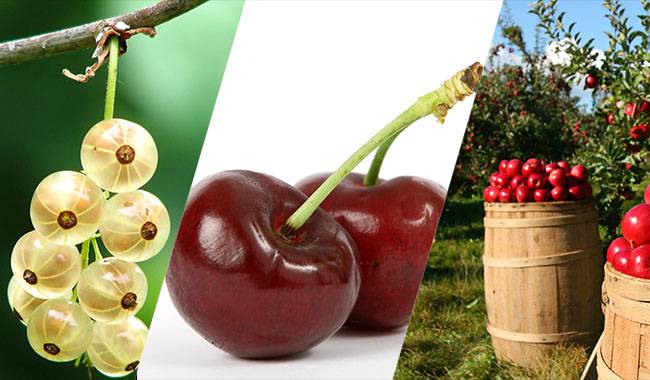
Gooseberry
It can be harvested at different stages of ripeness, depending on the variety and the prevailing climatic conditions of the year. If there is a lack of moisture and it is impossible to correct it, you should harvest them when they are not fully ripe and use them for processing. Gooseberry can be harvested later if conditions are favorable for full ripeness. Thin-skinned berries can be stacked in containers weighing no more than 6.6 lb (3 kg), and thick-skinned ones can withstand 22 – 33 lb (10 – 15 kg). However, despite this resistance to mechanical damage, it is not recommended to pour Gooseberry from one container to another, reducing its quality index.
Cherries and Cerasus
Cherries are picked immediately after they are visually ripe: the fruit of the cherry variety is juiced and colored, while the stalk remains green. Cherries must be torn with great care because by breaking the stalk, we lose the future harvest. After all, they do not return to their original position but form on the new growth, thus taking the berries further away from us. Some people recommend cutting the stalks of the cherries with scissors to avoid hurting the buds.
Cerasus needs to be treated in the same way as cherries. However, it is possible to leave the stems unpicked. However, they should be treated immediately.
Apples, Pears and Quince
Apples, pears, and Quince are picked with the whole hand: grasp the fruit and turn it upwards with the index finger at the junction of the stalk and the branch. This minimizes damage to the crop and maximizes the retention of the waxy envelope on the fruit for long-term preservation.
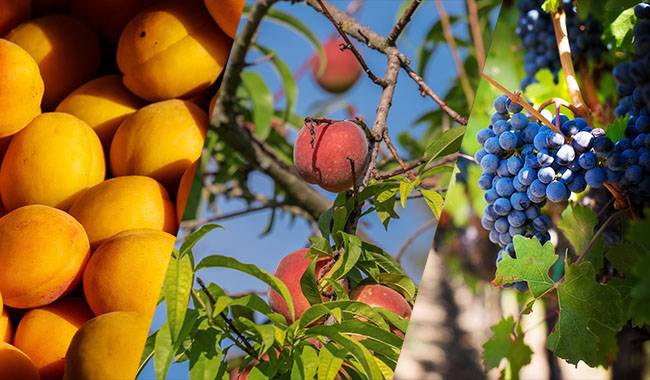
Apricots, peaches, and plums
Ripe apricots, peaches, and large plums have fruit that the fingers can easily crush. Therefore, it is recommended to use the whole hand for picking and wear gloves. When the fruit is turned over, break off the ring or stalk along with the “tail” and place it carefully in a container.
Grapes
We should cut it with scissors or shears. Since their storage life depends not only on the variety but also on the state of the wax layer on the grapes, be careful not to touch the bunches as much as possible when stacking them in crates. The best way to store picks is to hang them on hooks in a cool, dark room.
VEGETABLES
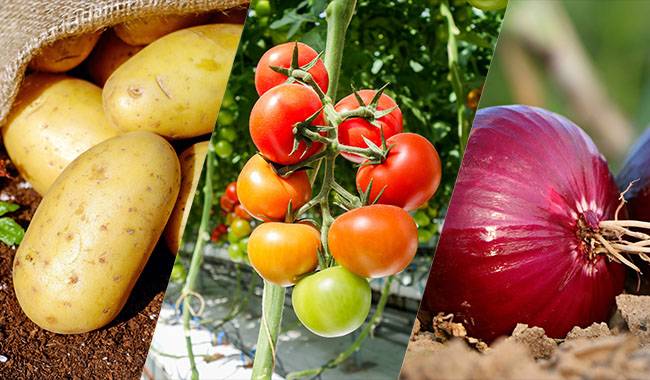
Potatoes
The sign that it is time to harvest potatoes is that their stems have shriveled. If this happens, don’t wait too long because the longer the tubers stay in the ground, the more they will lose weight. For light soils, it is best to dig out the potatoes with a pitchfork, while for heavy soils, use a spade. It is best to work in clear and dry weather, as this greatly increases the storability of the tubers.
Before storing harvested tubers, carefully clean them of loose soil (best done with towel-gloved hands), sort them according to size, and let them dry in a cool, ventilated place.
Tomatoes
Harvesting tomatoes starts with individual fruits every few days. However, as the temperature increases, they ripen faster, and then the tomatoes must be picked daily. The reddish fruits should be picked as soon as they ripen because the longer they are in the bush, the sooner the brush will ripen, which means that the rest of the fruit will not have enough time to mature gain the expected weight of the variety.
Harvest tomatoes in the morning with the sepals in the cap. Pick the fruit with the whole hand and gently break the stalk at the junction with the calyx.
Onions and garlic
Gardeners rarely consider onions. Often, it comes down to digging, pulling, and drying. And that part is true. But harvesting onions correctly means waiting for the leaves to dry and the neck to thin. Then dig up the bulbs, take them out of the ground, and let them dry in the open sun until they “ring.” Don’t scrub them too hard, don’t knock them against each other, and don’t turn them over at will, as this will reduce their storability.
On the other hand, garlic should never be exposed to sunlight but should always be dried in a well-ventilated, cool place. Direct sunlight can turn the pulp glassy and make the crop unsuitable for storage. The timing of harvesting also affects the storability of garlic heads: if delayed, the cloves will tear through their “shirts,” and their storability will be reduced.
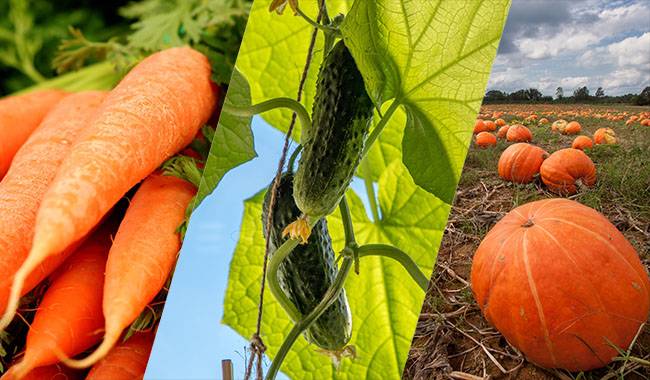
Carrot and beet
Carrot root crops are delicious when they are young, so there is no need to wait until they are fully ripe for digging them up. Instead, they should be dug up with a pitchfork, pulled off the tractor, and cut or trimmed with scissors if they are to be stored.
Beets are harvested in the same way. But do not take them to storage right away, but let them dry a little and tighten the wounds. If you grow several types of this vegetable, you should know that flat-rooted varieties store satisfactorily. And should be eaten first, while round and elongated varieties can stay in more extended storage.
The general rule of thumb for all root crops is to harvest them late afternoon when they have the lowest nitrate content.
Cucumbers and gherkins
We should pick cucumbers and gherkins regularly because if they linger on the plant, they can inhibit the development of other parts of the crop. Also, they should not be pulled off the shrubs or stepped on leaves and branches – all of which can stress the cucumbers and affect yields. Therefore, use a pair of scissors or shears when removing cucumbers and tiny huckleberries.
Peas and beans
Both peas and beans should be harvested when they are ripe. They are harvested in the early morning or late afternoon when they are as dry as possible. In hot weather, beans quickly wilt and lose their sugar content. If you want to nurture these crops to biological maturity, you can harvest them later and in one go.
Pumpkins
For giant pumpkins, a dry stalk is a sign of harvest, while a hard skin signals the harvest of pumpkins with nutmeg or hard bark. In dry, sunny weather, pull them off along with the “tails” to avoid damage, all at once. Starchy varieties are better for long-term storage: over time, the starch becomes hydrolyzed, and sugar increases.
Asparagus
Asparagus is harvested uniquely, first, by burying them in a high mound of soil for bleaching. Second, when you cut the sprouts through the ground, they are gradually broken apart with your fingers or cut with a special knife at a depth of 2 inches (10 cm). Third, the sprouts are progressively harvested, depending on the age of the plant: in the first three years, no more than 5 sprouts in total, and the following years, 10-16 sprouts per year.
No matter what crop you harvest, you can’t delay the harvest because it directly impacts its quality and quantity. But being too hasty in this matter also means incurring losses. Therefore, only a timely and correct approach to fruits, vegetables, and berries will ensure high yields and decent quality.







